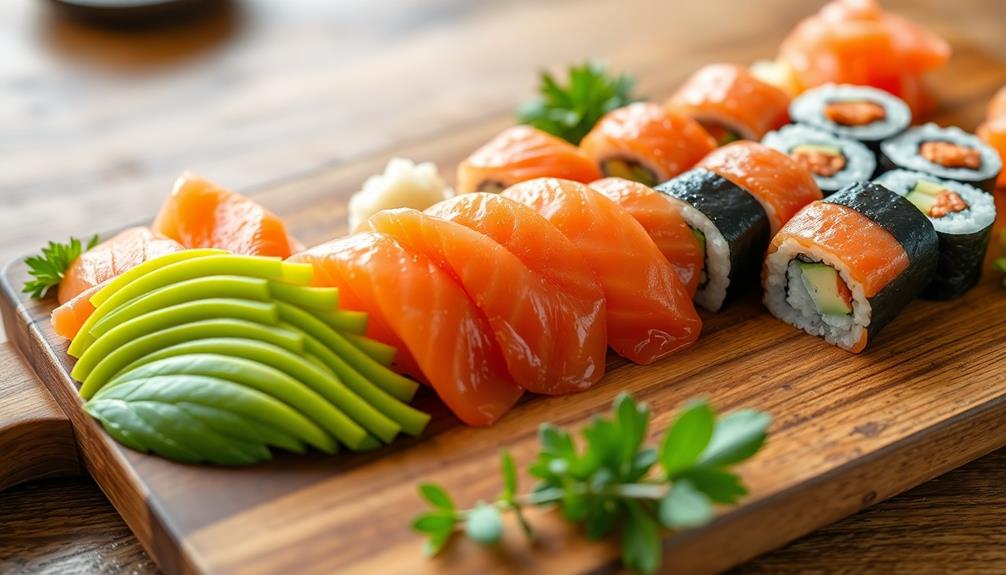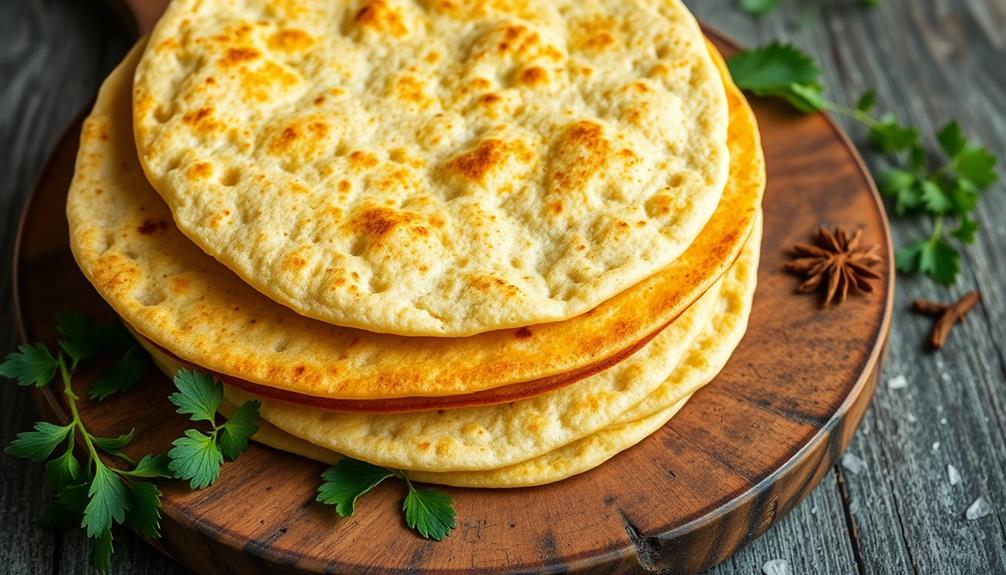Quesadillas make for a fantastic quick snack! Originating in Mexico, these cheesy delights are a cinch to prepare – just place a tortilla in a hot skillet, load it up with your favorite shredded cheese, then top with another tortilla and cook until golden-brown and the cheese is melted. Feel free to get creative by adding cooked chicken, sautéed veggies, or spicy seasonings. Serve piping hot, sliced into wedges, with a side of salsa or guacamole for dipping. Whether you're looking for an easy appetizer or a satisfying lunch, quesadillas are sure to hit the spot. And there's so much more you can do to elevate this simple yet scrumptious snack. For an extra zesty twist, try serving your quesadillas with a tangy homemade pickle recipe on the side. The sharp, briny flavor of the pickles contrasts beautifully with the rich, melty cheese, giving each bite a burst of freshness. With just a few extra ingredients, you can turn this beloved snack into a savory, gourmet treat! If you’re short on time, a **quick homemade pickle recipe** can be whipped up in no time with simple ingredients like cucumbers, vinegar, sugar, and spices. The crunch of the pickles adds an irresistible texture to the soft, cheesy quesadillas, making it an unforgettable pairing. With this easy addition, you’ll not only impress your guests but also elevate your snack game to a whole new level!
Key Takeaways
- Prepare a quick quesadilla by using flour or corn tortillas as the base and filling them with a blend of melted cheeses.
- Cook the quesadilla in a preheated skillet over medium heat, flipping it carefully to ensure even browning on both sides.
- For added flavor, consider adding cooked chicken, sautéed vegetables, or beans to the cheese filling.
- Serve the quesadilla hot, slicing it into wedges for easy sharing, and offer dipping sauces like salsa, guacamole, or sour cream on the side.
- Experiment with different cheese and filling combinations to create unique and satisfying quesadilla snacks.
History

The quesadilla, a beloved Mexican dish, has a rich history that dates back to the 16th century. Originally, the quesadilla was a simple dish made by folding a tortilla around cheese and grilling it on a comal, a traditional Mexican griddle.
Over time, the recipe evolved, with the introduction of various fillings like meat, vegetables, and spices. Over time, the recipe evolved, with the introduction of various fillings like meat, vegetables, and spices. These adaptations allowed for new cultural twists and flavors, making it a versatile dish enjoyed by people around the world. Similar to experimenting with an overnight oats breakfast recipe, individuals began incorporating regional ingredients, creating endless possibilities and personal touches to suit their tastes.
The name "quesadilla" comes from the Spanish words "queso" (cheese) and "tortilla." This dish was particularly popular in central and southern Mexico, where it became a staple snack or light meal.
Quesadillas were often served as a quick and satisfying option, especially for those on the go.
Today, the quesadilla has become a beloved dish worldwide, with countless variations and creative fillings.
Despite its evolution, the essence of the quesadilla remains the same – a warm, melty, and flavorful combination of crisp tortilla and delicious fillings.
Recipe
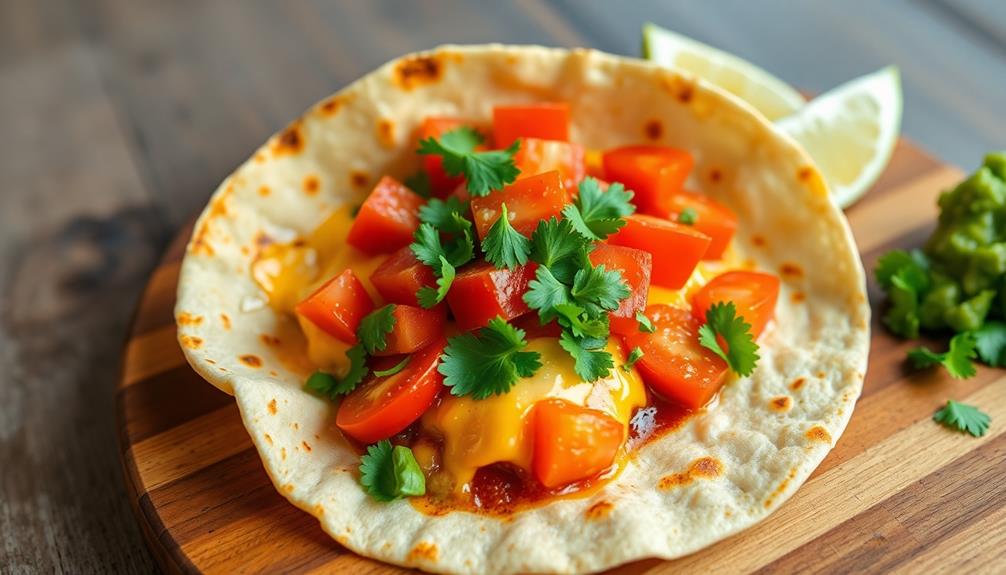
A quesadilla is a Mexican dish made with a tortilla that's filled with cheese and other ingredients, then grilled or cooked until the cheese is melted. This simple and versatile dish can be a satisfying snack, appetizer, or even a main course when paired with a salad or side dish.
Quesadillas can also serve as a canvas for creativity, allowing you to explore various flavor combinations and make sustainable choices in your meal preparation, which is essential for overall wellness and the power of imagination.
Quesadillas are a great option for busy weeknights or casual gatherings. They come together quickly and can be customized with a variety of fillings to suit individual tastes. Whether you prefer classic cheese or want to get creative with meats, veggies, or even leftovers, the possibilities are endless.
Ingredients:
- 4 medium-sized tortillas (flour or corn)
- 1 cup shredded cheese (cheddar, Monterey Jack, or a blend)
- Optional fillings: cooked chicken, steak, sautéed peppers and onions, black beans, corn, etc.
Instructions:
Preheat a large skillet or griddle over medium heat. Place one tortilla in the skillet and top with half of the desired fillings. Sprinkle the fillings evenly with half of the shredded cheese. Top with another tortilla. Cook for 2-3 minutes per side, or until the cheese is melted and the tortilla is lightly browned.
Repeat the process with the remaining tortilla and fillings.
Tips:
- For a crispier texture, brush the outside of the tortillas with a small amount of oil or melted butter before cooking.
- Serve the quesadillas with your favorite toppings, such as salsa, guacamole, sour cream, or diced tomatoes.
- Experiment with different flavor combinations to find your perfect quesadilla.
Cooking Steps
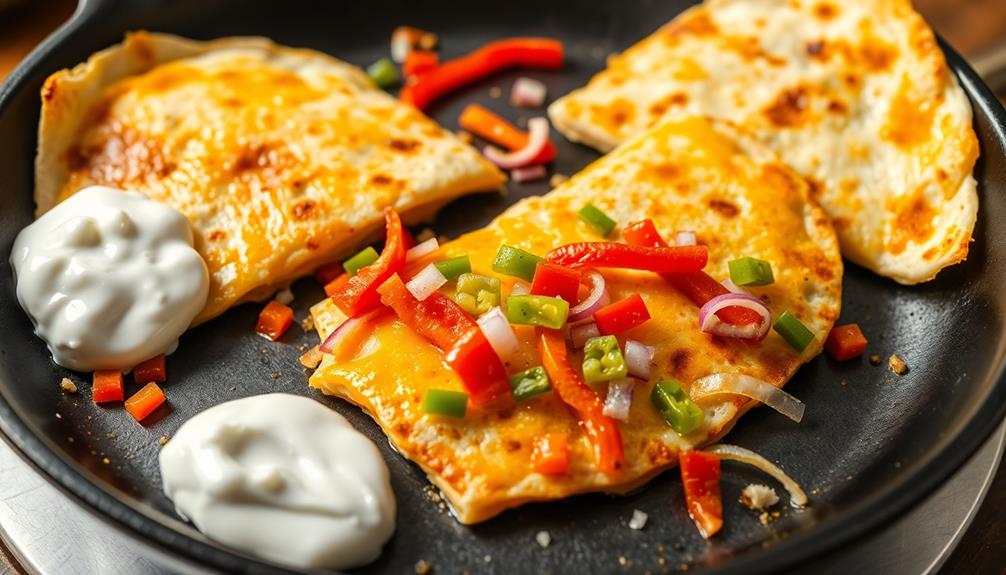
Heat a skillet over medium heat.
Place a tortilla in the skillet and top it with slices of cheese.
Cook until the tortilla is golden brown, then flip and cook the other side until the cheese is melted.
Step 1. Heat a Skillet

Heating the skillet is a crucial step in preparing your delectable quesadilla. You'll want to use a nonstick skillet or griddle for the best results. Place it over medium heat and let it warm up for a minute or two.
It's important to get the pan nice and hot before adding your ingredients, similar to how modern heat pumps operate efficiently once properly set up in a home. Once the skillet is heated, you can add a small amount of oil or butter to lightly coat the surface. This will help prevent sticking and ensure your quesadilla cooks evenly.
Noise levels of modern heat pumps can be as low as a refrigerator, allowing you to enjoy your cooking without distractions. Swirl the pan to distribute the oil or melted butter.
Now you're ready to assemble your quesadilla. Carefully place one tortilla in the hot skillet and let it cook for 1-2 minutes, until the bottom is lightly golden.
Flip the tortilla and add your desired fillings, such as cheese, cooked chicken or beef, sautéed veggies, or spices. Top with another tortilla and cook for an additional 1-2 minutes, until the cheese is melted and the tortilla is crispy.
Step 2. Place Tortilla in Skillet
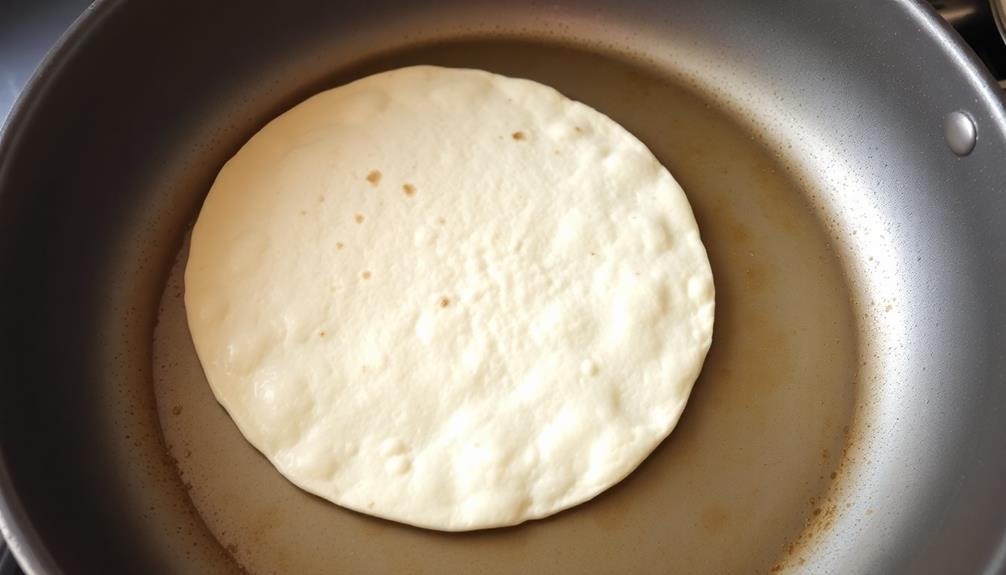
Now that your skillet is nicely preheated, it's time to start assembling your quesadilla. Place one tortilla in the hot skillet, ensuring it lays flat and evenly covers the surface. This will create a crisp, golden-brown base for your quesadilla.
As the tortilla heats up, you'll notice it start to puff and sizzle slightly around the edges. This is a good sign – it means the tortilla is cooking and getting ready to be filled. Be sure to keep an eye on it, gently lifting the edges with a spatula to check for even browning.
Once the bottom side has developed a light, crispy texture, it's time to flip the tortilla over. Use a spatula to carefully turn the tortilla, making sure to keep it flat and intact. This will allow the other side to cook and develop a similar golden-brown appearance.
Step 3. Add Cheese Slices
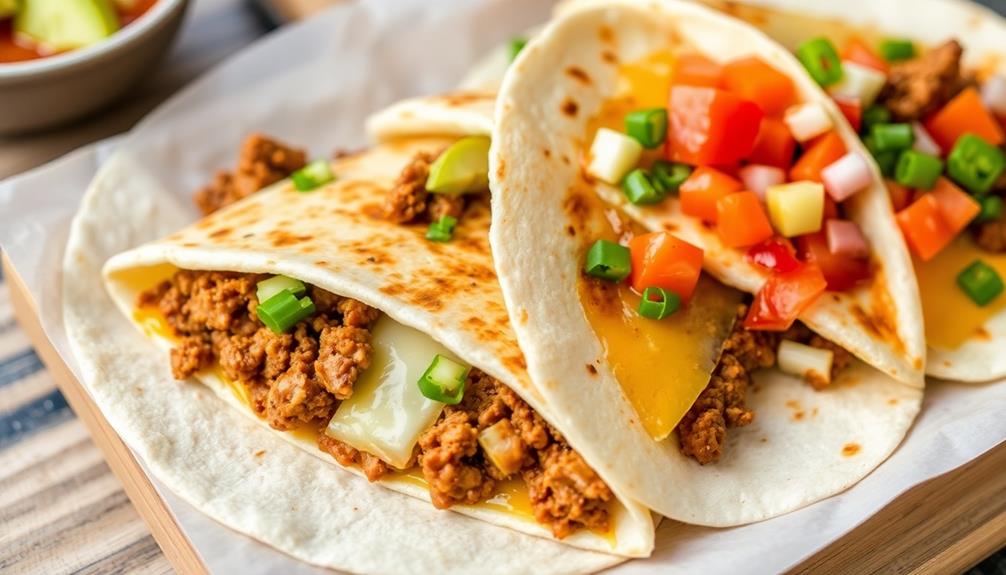
Once the tortilla is sizzling in the pan, go ahead and begin adding the cheese slices. You'll want to use a generous amount, covering the entire surface of the tortilla. Sliced cheddar, Monterey Jack, or a Mexican cheese blend all work wonderfully. Aim for about 1-2 slices per quesadilla, depending on the size of your tortilla.
As the cheese starts to melt, you can use a spatula to gently fold the tortilla in half, forming a half-moon shape. This helps the cheese bind the two sides together as it continues to melt. Be careful not to overstuff the quesadilla, as this can make it difficult to flip and can lead to messy spills.
Once the cheese is fully melted and the tortilla is lightly browned on both sides, your quesadilla is ready to enjoy! Slice it into triangles and serve with your favorite toppings, such as salsa, guacamole, or sour cream.
Step 4. Top With Another Tortilla

After the cheese has begun to melt, place another tortilla on top of the quesadilla. This will create a sandwich-like structure, trapping the cheese and fillings inside.
Gently press down on the top tortilla to ensure it adheres to the melted cheese. This will help the quesadilla hold together as you cook it.
Once the top tortilla is in place, you'll want to cook the quesadilla on both sides until it's golden brown and the cheese is fully melted. Use a spatula to carefully flip the quesadilla, cooking each side for 2-3 minutes. The cheese should be oozing out the sides, indicating it's ready.
When the quesadilla is cooked to your liking, remove it from the pan and let it cool for a minute or two before slicing. This will allow the cheese to set and prevent a messy, drippy situation.
Serve your delicious homemade quesadilla warm, with your favorite dipping sauces on the side.
Step 5. Cook Until Golden Brown
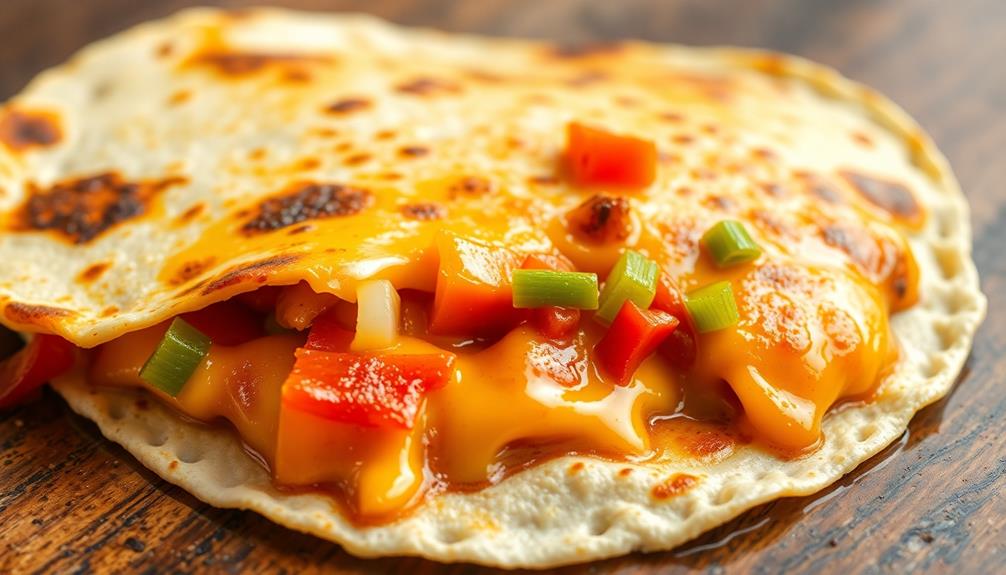
Cook the quesadilla on both sides until it's golden brown and the cheese is fully melted. This typically takes about 2-3 minutes per side, depending on your stovetop temperature. Keep a close eye on it, as the tortilla can go from perfectly toasted to burnt in no time.
To achieve that delightful crispness, use a non-stick skillet or griddle and heat it over medium heat. Once hot, carefully place the quesadilla in the pan. Use a spatula to gently press down and ensure even browning. Flip the quesadilla over once the bottom is golden brown.
Continue cooking the other side until it too reaches that beautiful, toasted hue. The cheese should be fully melted, oozing out the sides. Resist the urge to peek too often, as this can cause the quesadilla to fall apart.
Once both sides are perfectly cooked, remove the quesadilla from the heat and let it sit for 30 seconds before slicing and serving. This allows the cheese to set and the flavors to meld.
Final Thoughts

Ultimately, you've mastered the art of crafting the perfect quesadilla. With your newfound skills, you can whip up this tasty snack in a matter of minutes, satisfying your cravings and impressing your friends and family.
The keys to success are simple – a golden-brown, crispy exterior, and a melty, flavorful interior.
As you continue on your quesadilla-making journey, don't be afraid to experiment with different fillings and flavor combinations. From classic cheese to spicy chorizo, the possibilities are endless.
And don't forget to adjust the cooking time and temperature to suit your personal preferences.
Frequently Asked Questions
Can I Use Pre-Made Tortillas Instead of Homemade?
Yes, you can absolutely use pre-made tortillas instead of homemade ones. Commercially-made tortillas work just as well and can save you time. Just be sure to choose a quality brand that's fresh and pliable for the best quesadilla.
How Long Do the Quesadillas Stay Fresh in the Fridge?
Pre-made tortillas will keep your quesadillas fresh in the fridge for up to 3-5 days. Just be sure to store them properly in an airtight container or resealable plastic bag to prevent them from drying out or becoming stale.
Can I Substitute Different Types of Cheese?
You can absolutely substitute different types of cheese in your quesadillas. Feel free to experiment with cheddar, Monterey Jack, Pepper Jack, or even a blend of cheeses to find your favorite flavor combination.
Do I Need to Use a Griddle or Can I Use a Skillet?
You can use a skillet instead of a griddle for your quesadilla. A skillet works just fine and allows you to cook the quesadilla just like you would in a griddle. It's a great alternative if you don't have a griddle.
Can I Freeze the Leftover Quesadillas for Later?
You can definitely freeze leftover quesadillas for later. Just wrap them individually in plastic wrap or aluminum foil and pop them in the freezer. When you're ready to enjoy, simply reheat them in the oven or microwave.



